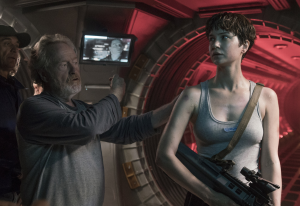
The release of Spider-Man: Far From Home (combined with a number of appearances in other Marvel Studios films) has established a solid framework for the third Spider-Man franchise released within the past 20 years. Comic book readers are very familiar with the notion of comparing different takes on Spider-Man dating as far back as comparisons between co-creator Steve Ditko and artist John Romita who delivered very different, but similarly essential, visions for the character during the 1960s. However, this sort of comparison is newer to modern audiences, who have only recently seen a stack of different Spider-Men (not to mention Batmen and Supermen). These sorts of comparisons aren’t simply a fun point of debate regarding which is your personal favorite, they also help provide a better understanding of different creative approaches to the same material, clarifying why we might like or dislike different versions and specific elements.
Videos by ComicBook.com
Two of the three modern Spider-Man movie franchises stand out for being the most resonant, based on both their box office and critical response, making it easier to narrow this particular comparison to the series helmed by director Sam Raimi between 2002 and 2007 and the current series directed by Jon Watts starting with Spider-Man: Homecoming in 2017. They provide very different interpretations of the same source material, partially due to their respective director’s decisions and partially from the absurd number of factors that go into making any film, including studio interests, casting, etc.
Rather than look at all of the history surrounding each of these movies, focusing on the core films and the different directors approaches to Spider-Man makes it clear what the biggest divide in these two Spider-franchises really is, and why audiences respond to them so differently.

Sam Raimi’s Ethos
Sam Raimi’s trilogy is best understood through the director’s emphasis on Spider-Man’s ethos—the character’s essential spirit and values. While the meaning of any icon is bound to vary between each individual reader, consistent themes emerge across time that make it easier to detect how Raimi both perceives and emphasizes the overall ethos in his films.
All three of his films are moral-oriented with audiences engaging in various lessons and with the core theme of those lessons providing the central motivation of each film, presented in their plot, characters, and conflicts. These themes, summarized in a single word for each respective installment, would be: responsibility, sacrifice, and forgiveness. Take Spider-Man 2 for an example. Spider-Man is struggling with balancing his many choices, specifically how his superhero role is depriving him of achievements in academia, family, romance, and friendship. Yet even after he attempts to forego his role as Spider-Man, he cannot be stopped from sacrificing even more to save both Mary Jane and the citizens of New York City. The moment in which he is literally being torn apart in an attempt to stop a runaway train serves as a thesis for the film. He gives both his body and security (i.e. his secret identity) to save these strangers, and it is portrayed by the film as the only correct action. The same can be seen in his mentor and, later, antagonist Doctor Octopus who dies in order to right the wrongs, sacrificing his own dreams, as well. This concept of sacrifice and all of the other essential themes in Raimi’s films are pulled directly from the source material. Fans are undoubtedly familiar with the axiom “with great power there must also come great responsibility,” but themes of sacrifice and forgiveness have been essential to Spider-Man comics since Ditko and Lee were collaborating on the title.
There’s an over-arching morality to the entire trilogy, as well. Each of these themes is present throughout and based in a specific worldview that goes beyond a general morale, like those delivered by Aesop. Peter Parker is established as a blue-collar, working class hero, someone without many resources raised by a couple who are barely making ends meet. He is constantly engaged in the act of survival, even as he puts others before himself, making survival more difficult. The “old Parker luck” is fully realized as even seemingly good news always provides new problems.
Its this ethos that makes Raimi’s three films a coherent piece of cinema. Even the most often criticized elements of these films (e.g. cast ages, campy tone) are made to work from this perspective. Realism is not a necessity in a story that is engaged in myth-making. Raimi’s movies do not seek to construct a power fantasy in which audiences can escape reality, but a moral construct that allows us to better understand reality. This is why the obvious elements of artifice improve the experience, not diminish it.

Jon Watts’ Aesthetics
Jon Watts’ two Spider-Man films to date do a lot of work in addressing the most common criticisms of Raimi’s trilogy, though. The cast is age-appropriate and delivers more standard sorts of onscreen chemistry and charm. The many gadgets and suits are generated using the logic of the MCU franchise, thus providing an explanation for how everything appears (not to mention the near perfect realization of Ditko’s original Spider-Man costume). The tone of the movies is focused on high school-style romantic hijinks, mix-ups, and Spidey quips. Watts’ has done an excellent job making these movies feel like Spider-Man stories by emphasizing the character’s aesthetics (both in source material and past adaptations).
This tracks with Watts’ approach to cinema in general. He has referenced the films of John Hughes’ as a source of inspiration in his franchise—a director renowned for his ability to deliver familiar forms of humor, conflict, and angst to mass audiences. Accessibility is key and that means providing an inviting exterior in a visceral, visual medium like film. Everything in Watts’ Spider-Man movies looks and feels like Spider-Man, providing scenes hallucinogenic battles with Mysterio and holding together the Washington Monument as if they were pulled directly from the comics.
However, this incredibly pleasing exterior has often lacked the moral and narrative cohesion of Raimi’s approach, providing some insight into how the two franchises differ beyond their aesthetics. The climactic scene in which Spider-Man is forced to lift a collapsed building in Spider-Man: Homecoming, a direct homage to Amazing Spider-Man #33, provides an excellent example of this divide. In the comics this moment is focused on how Spider-Man has no choice but to do the impossible in order to fulfill his obligations to others. He is directly concerned about his Aunt May’s illness and is forced to nearly destroy his own body to continue serving his responsibilities (even though they might exceed his powers). The film captures the appearance of this moment perfectly, but the relationship of powers and responsibilities are much more vague. Spider-Man is cleaning up a problem caused by Tony Stark with potential long-term consequences, but no immediate effects and none that are related to Spider-Man by any reasonable, ethical framework. It’s a strange case of carrying water for the rich and powerful, rather than exploring one’s essential moral connections to the world.
Watts has ultimately succeeded in providing the aesthetic of Spider-Man adventures, capturing the wonder, gadgets, charm, and appearances that have made him an enduring superhero icon. Yet the underlying ethos of these films, insofar as one can be detected, appears to be a secondary consideration when set beside the aesthetic of Spider-Man.

Will the Real Spider-Man Please Stand Up?
None of this is to say that either franchise is inherently superior to the other. Both have emphasized different aspects of the same characters, providing very different sets of films that can each be rewarding in their own right. Some audiences are bound to be more attracted to the constant thrills and escapism offered by Watts’ films, while others may enjoy the campy delivery of superhero philosophy distilled by Raimi’s. What is most useful is to recognize how their priorities diverge to better appreciate the intentions and achievements of both, as well as our own responses to them.
There has been one crucial, unmentioned factor in this comparative discussion, and it’s not Marc Webb. In considering the tension between an ethos and aesthetics oriented approach to filming Spider-Man, there is an implication that these two elements are at odds with one another when that has never been the case. This division may explain very different response to the work of Raimi and Watts, but it was reconciled by directors Bob Persichetti, Peter Ramsey, and Rodney Rothman in the animated film Spider-Man: Into the Spider-Verse. Consider and list the most acclaimed elements of both the Raimi and Watts franchises, and the vast majority of those elements will be a part of this widely-acclaimed release.
Into the Spider-Verse is a movie that captures the aesthetic of Spider-Man in its technology, suits, on-screen chemistry, and wild, superhero action. It is also one of the most thematically coherent superhero films ever to reach the screen, touching on all three cornerstones of the Raimi trilogy’s ethos and adding an additional consideration of universality. The movie simultaneously feels exactly like a Spider-Man story and delivers deeply resonate lessons, merging aesthetics and ethos into the most significant Spider-Man film to date. Every director to leave their mark on Spider-Man has provided a different perspective, one that enhances our understanding of the character, so it’s probably appropriate that the one most closely resembling the source material has also offered the most coherent approach of all.








